India's Motor Show: What are the features of the advanced technology exhibits? ~Review of Auto Expo 2020 (Part 2)
- Release date: Mar 25, 2020
- 3125 Views
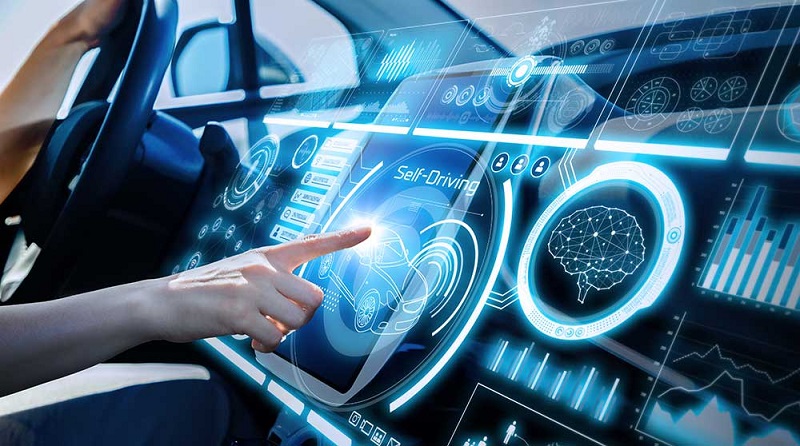
In this article, a Japanese researcher from Intage India looks back on this expo from the aspect of advanced technologies such as electrification and connected, with the results of interviews with visitors.
For a report on each manufacturer's exhibit, please see What are the characteristics of the major manufacturers' pavilion exhibits at the Indian motor show? ~A review of the Auto Expo 2020 visit (Part 1).
As this expo was called "AUTO EXPO - SHOWCASING MOBILITY OF THE FUTURE," there were many exhibits related to advanced technologies. With the government's policy of promoting electrification in stages by 2030, a wide variety of EVs, including passenger cars, two-wheelers, and commercial vehicles, were on display at the expo. On the other hand, I had the impression that there were only a few exhibits about automated driving and sharing.
A diverse lineup of EVs expected to become widespread in the near future
As for passenger cars, all the manufacturers exhibited EV models. Among them, two Chinese brands that are making progress with EVs and Tata Mahindra & Mahindra, a local company in India, stood out in particular.The Chinese brands MG and GMW, which are moving toward electrification in metropolitan areas, exhibited a variety of EV models. According to my count, MG and GWM exhibited five and six models of EVs, respectively, and compared to other companies such as Hyundai and KIA, which exhibited only two models, MG exhibited a variety of EVs, including sedans, SUVs, and hatchbacks, and presented a variety of options. MG displayed a variety of EVs, including sedans, SUVs, and hatchbacks, offering a wide range of choices.
Tata exhibited the Altoz EV model in addition to the Nexon, an SUV-type EV that is already on the market. In addition, a test drive course was set up on the second floor of the booth to allow visitors to experience the features of EVs, such as the quietness and low vibration of motorized driving. When we talked to visitors this time, many of them said that they were very surprised by the quietness of EVs, and we can say that we succeeded in deepening their understanding of the characteristics of new products by having them actually see and experience them.
Mahindra & Mahindra, also a local company in India, drew attention with its announcement of the eKUV 100, an SUV-type EV that can be purchased for just over 800,000 rupees (about 1.2 million yen) by taking advantage of subsidies. Compared to the MG Hector EV and the Tata Nexon EV, both of which are SUV-type EVs currently available in the market, the eKUV 100 is reasonably priced at around Rs. 2 million (approx. 3.2 million yen) and Rs. 1.4 million (approx. 2.2 million yen), respectively.
[EV Exhibition]
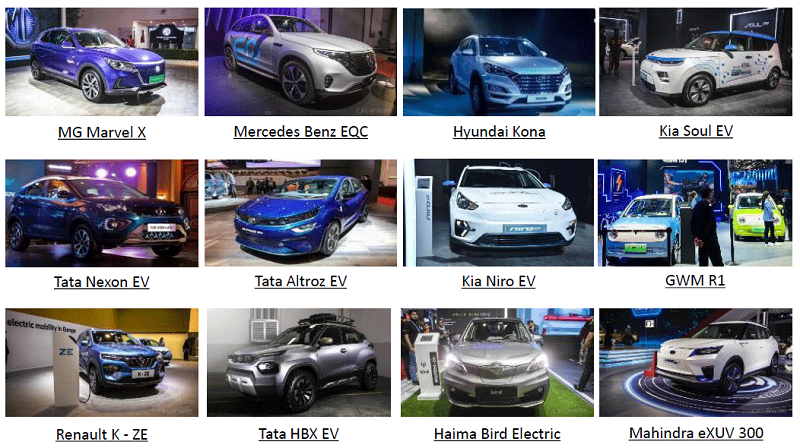
Looking at the two-wheeled vehicles, while Honda, Hero, and other major manufacturers were not exhibiting, there were many EV start-ups. In India, two-wheeled EVs do not require a driver's license, but they are generally considered to be slow and lacking in power. For example, Hero Electric and EeVe exhibited sports type EVs, and OKINAWA Scooters exhibited models with a maximum speed of over 50km and a sanctioned weight of up to 150kg. (Incidentally, OKINAWA Scooter is an Indian company, named by its owner who is pro-Japanese. The company has set up an office in Okinawa with the aim of reimporting its products to Japan in the future.
In addition, all the companies were working to enhance the functions that link EVs with smartphones, such as making it possible to check the remaining battery level and the distance that can be traveled, and using a geofence function to alert the user so that the vehicle does not go outside the area where it can travel on a single charge. On the other hand, the major manufacturers (Suzuki and Piaggio) who were exhibiting at this year's show did not display EV motorcycles, but focused on existing motorcycles such as scooters and sport bikes. In the Indian two-wheeler market, which is said to be around 20 million units per year, engine vehicles are still the main battlefield, and the stance of the major manufacturers was that they were taking a wait-and-see approach to EV two-wheelers.
[EV 2-wheel start-up]
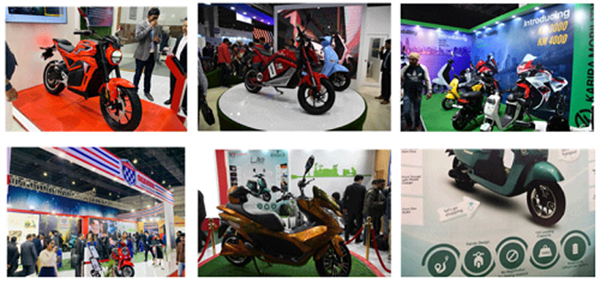
[Suzuki/ Piaggio]
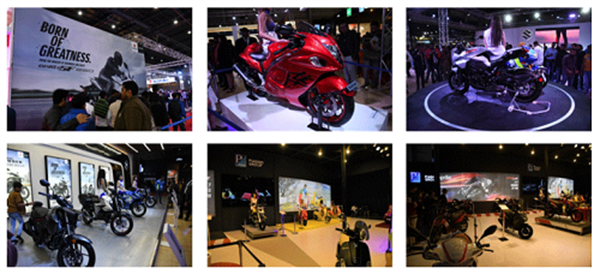
[EV for commercial vehicles]
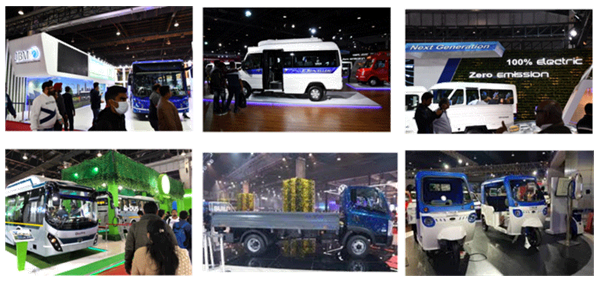
Connected functions are becoming a basic performance.
Regardless of the size of their booths, many manufacturers exhibited connected functions with smartphones and other devices. In particular, four Chinese and Korean companies and Tata, which had a large pavilion, set up exhibits on connected devices to appeal to visitors. For example, KIA set up a booth with a touch screen video presentation of the main functions of its UVO connected service, and MG had a booth where visitors could experience connected services by touching the demo of its in-vehicle equipment. Some of the older visitors said that the service was convenient, but that it was only for young people. In general, there were many positive comments.Next, looking at connected services other than passenger cars, Tata introduced a connected service for commercial vehicles that appealed to both owners and drivers. On the business owner side, the app manages the location of the vehicle, work hours, and visualizes fuel consumption and other costs. On the driver side, in addition to managing past work performance, the app shows the location of the nearest dealership or service center, and alerts when fuel is stolen while parked. In addition, a tire manufacturer proposed the following services. Among tire manufacturers, JK Tyre showed a connected tire that allows you to check air pressure and tire temperature with your smartphone.
A representative from one of the exhibitors I interviewed at the Expo said, "Until a few years ago, connected functions were an added value and limited to luxury cars. However, at this year's expo, all the major manufacturers have introduced it as a standard feature in their main models. In the Indian market, where the number of smartphone users exceeds 400 million and digitalization is advancing, connectivity may become a basic feature not limited to passenger cars.
[Connected Services]
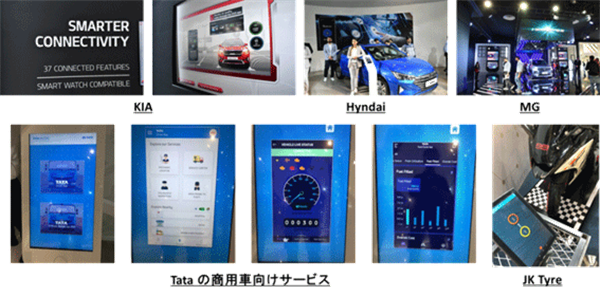
India's road conditions pose a barrier to automated driving and advanced safety technologies
Compared to EVs and connected technologies, there were not many exhibits related to automated driving and advanced safety technologies. Among them, two Chinese manufacturers stood out: MG drew a lot of attention by unveiling the Marvel X, a Level 3 self-driving EV scheduled for release in 2021, and GWM displayed a demo car (R1) that allows visitors to experience automated driving. GWM displayed an automated driving demo car (R1), and many visitors lined up to experience automated driving, showing the high level of consumer interest in new technologies.However, many consumers were skeptical about the introduction of automated driving in India, saying, "Considering the road conditions in India, I think it will be difficult to drive automatically in the city. "Given the road conditions in India, I think it will be difficult to drive automatically in the city, although it may be possible on highways... "Even in other countries, there are concerns about safety, so isn't it difficult to realize this in India right away? "Even in other countries, there are concerns about safety. As a resident of India, my feeling is that it will take some time to realize automated driving on Indian roads, which are crowded with cars, rickshaws, motorcycles, bicycles, people, and cows, and do not observe the lanes.

On the other hand, when we asked the visitors about the safety technologies they were interested in at the Expo, most of them commented on the airbags and the robustness of the body itself, but few mentioned the automatic emergency braking and the function to prevent falling asleep at the wheel. I felt that the level of awareness of advanced safety technologies was not high. As with automated driving, advanced safety technologies such as lane keeping assist and automatic emergency braking are probably perceived as technologies for the distant future, considering the traffic conditions in India.
[Mahindra & Mahindra's Safety Technology Appeal]

Finally
While many Japanese and other manufacturers decided not to participate in Auto Expo 2020 due to the slowdown in the economy and sales, the Chinese manufacturers of MG and GWM left a big impact on the motor show. In addition to the experience of using familiar products such as smartphones, we now live in an age where information from overseas is readily available, and the rapid progress of Chinese manufacturers, not only in the automobile industry, is well known to Indian consumers. Due to these changes in the times, Indian consumers do not have a negative impression of Chinese manufacturers, but rather view them as global brands with various functions and technologies, and high value for money, according to interviews with visitors.On the other hand, Japanese manufacturers have a legacy of high quality and premium image, but the high price seems to be a bottleneck for them. GWM is planning to enter the Indian market this year, and it is not hard to imagine that it will gain a certain share of the Indian market like MG did last year. Considering the recent slump in sales of Japanese manufacturers and the impact left by Chinese manufacturers at this year's expo, I wonder if Japanese manufacturers will allow Chinese manufacturers to turn the tables on them and further widen the gap. I felt such a sense of crisis at the auto show.
[References]
[Mainly display vehicles of other manufacturers]
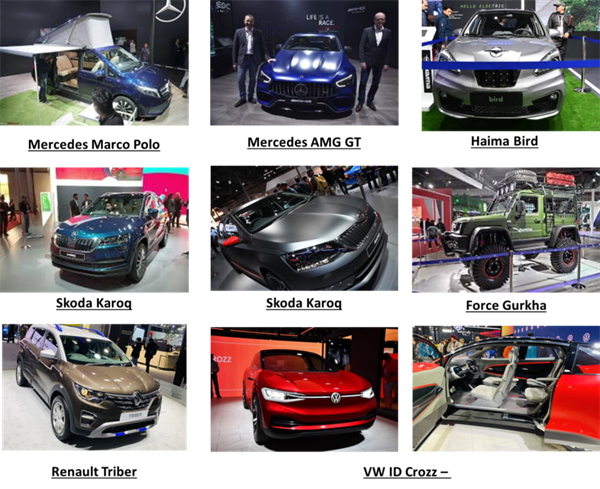
[Exhibition of tire manufacturers]
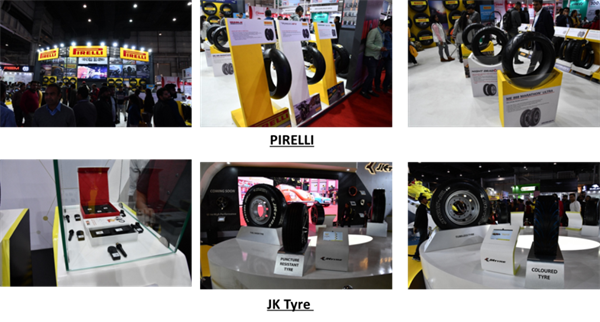
[Concept car]
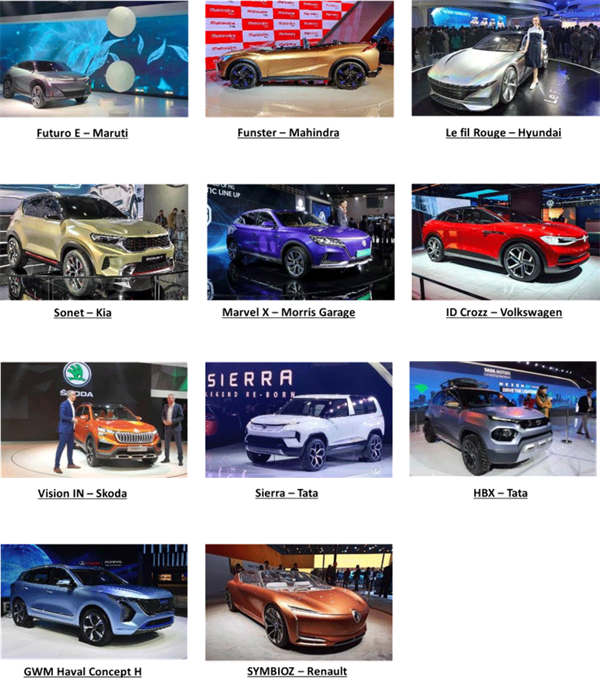
-

Author profile
Intage Inc
***
-

Editor profile
Intage Inc.
***
 Global Market Surfer
Global Market Surfer CLP
CLP